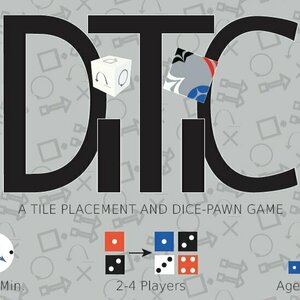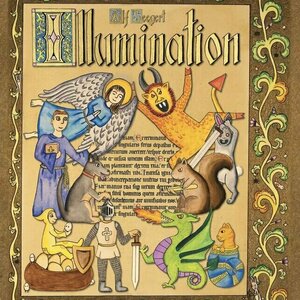
As I Walked Out One Midsummer Morning
Book
As I Walked Out One Midsummer Morning is a beautiful and moving follow-up to Laurie Lee's acclaimed...
(SLIGHT SPOILERS AHEAD)
In series one, a mammoth is found under the ice, threatening the development of a new hotel and Fortitude's first murders occur. There are many potential suspects but it turns out it's not just a straightforward case of finding who is responsible.
Throughout the three series' there are scientific discoveries and experiments, a shaman, missing persons, people possessed by parasites, a schoolteacher with a feeding fetish and many, many questions.
The first series was superb. The second series was just as good but started to get a little weirder. The third series is shorter than the previous two at only four episodes, but managed to fit in a whole lot more weirdness. (Dance with a burnt corpse, anyone?)
Series three is reported to be the last, and I think that's the right choice, but the ending does leave the possibility of the cause of Fortitude's 'problems' starting again somewhere else.
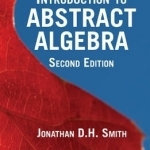
Introduction to Abstract Algebra
Book
Introduction to Abstract Algebra, Second Edition presents abstract algebra as the main tool...

24 Game – Math Card Puzzle
Games and Education
App
The OFFICIAL 24® Game app is back from the makers of the popular 24® Game! Now you can challenge...
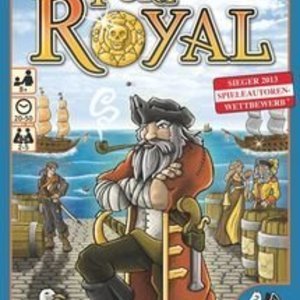
Port Royal
Tabletop Game
The merchant players in Port Royal, which won the Austrian Game Designers Competition under the...
Boardgames CardGames Pirategames
Purple Phoenix Games (2266 KP) rated DiTiC in Tabletop Games
Oct 2, 2019
So my original thought was to try to open this preview with a dastardly abstract statement to truly emphasize how theming is irrelevant with some activities. Not quite having done that, DiTiC is an abstract strategy game of “tile placement and dice-pawn” movement. How does it play? Read on.
In DiTiC the winner is the first player to upgrade one of their dice from a smaller-valued die into a value of six. Bring out smaller value dice and move them around the “board” to combine with other dice and win the game!
DISCLAIMER: We were provided a review copy of this game for the purposes of this review. These are preview copy components, and I do not know if the final components will be similar or different, or if the Kickstarter campaign will alter or add anything through stretch goals. -T
To setup a game of DiTiC, each player chooses a color of dice and takes all dice into their hand. The tile with “DiTiC START” on it is the, well, starting tile and is placed in the middle of the table. Roll off to see who goes first and you are ready to play!
On a turn a player may draw and place a tile or move one of their dice. Players start with zero dice on the board, so the first few turns will be drawing a tile from the bag and placing it on the board either side face-up. As you can see from the photos the tiles will have different colored (and shaped) corners. It’s when these corners complete an intersection of four tile corners that dice may enter the board. Depending on the color of the intersection’s majority control a die of said majority color comes into play on the value of the number of icons present. That’s a mouthful. So there are four corners to the intersection. If said intersection contains two red, a blue, and a black icon then red will place a die with value of two pips showing on that intersection. These dice may now be moved and combined with like-valued dice (with an exception). If a player has at least one die on the board when initiating this action, they may roll the action die after placement and complete any other actions the die result allows.
When a player decides instead to move, combine, or overtake a die, they simply move the die along the edge of a tile to the next closest intersection. Exception to movement: players can move all dice with a value of one BEFORE any other dice movement, and dice with value of one or two may move in any direction – even diagonally.
To combine/upgrade dice players will need to move one die into the same intersection as an equal-valued die in order to combine into a die of value +1. Example: a four die and a four die combine to make a five die. Exception to combinations: a value one die may combine with a value three die (remember the exception from the previous paragraph?) to create a value four die.
To overtake an opponent’s die, a player simply moves a superior die onto an occupied intersection. Typically, a die of larger value can overtake any die of smaller value. Exceptions: nothing may overtake a four or five, and only a five can overtake a three. Three-value dice seem to be the superheros of DiTiC.
So after many back-and-forth turns of placing tiles and rolling dice or moving/combining/overtaking dice the winner is crowned once they have upgraded any die into a value six die.
Components. Again, this is a prototype version of the game, so I will comment on what I can. I think the game looks very nice, even in this stage of production. The icons on the tiles are clear – and THANK YOU for considering the colorblind gamer community by making each icon different by both color and art style. The dice are your typical d6 (and I do not know if there will be any changes made to these as a result of a successful campaign). The icons on the action die make sense and I really dig the laser-etched wooden design, and I kinda hope that detail makes it into the final product. But I prefer wooden dice to plastic every time. The game also came with a burlap bag to house and conceal the tiles, and coupled with the wooden dice makes a nice little natural organic combo. My only request for the final version of the game? Go crazy with the color scheme. Black, red, white, and blue are great colors, but fling out the purple and the gold and the orange and the aqua. But I’m no designer. It looks great as it is.
So like I said up top, I love abstracts. Surprisingly so. The more I play them the more I love them. And this game definitely adds to my love of the genre. The rules are kinda wacky, and the dice of different values each can do their own thing, and I think that’s really interesting. It’s not simply a game of moving big dice around eating all the little dice. I mean, you CAN do that, but you will not advance your own strategies. But there is an amount of take that in this game, from the action dice to the tile placement to the overtaking of dice, that will really appeal to lots of people. It’s not a big game, but it looks great on the table, and plays really well once you have immersed yourself in the rules. I really believe that the more I play it the more I will fall in love with it. In fact, as I type this I want to go home and play it right now. And that’s a mark of a good, if not great, game, isn’t it?
If you like abstract strategy games and have a little room for this small game in your collection (or better, MAKE some room for it) then you should definitely consider backing it on Kickstarter, or (depending on when you read this) picking it up at your FLGS.
Purple Phoenix Games (2266 KP) rated Illumination in Tabletop Games
Oct 5, 2021
Illumination is a game about two monks who are tasked with illuminating the pages of manuscripts with drawings in the hopes of becoming the next head of the Scriptorium: The Scriptmaster, one might say. However, one of the monks gets a little itch and begins to draw irreverent subjects, like demons, dragons, and such. Which monk will earn the made-up-by-me title of Scriptmaster? Guess you will have to play to find out.
DISCLAIMER: We were provided a copy of this game for the purposes of this review. This is a retail copy of the game, so what you see in these photos is exactly what would be received in your box. I do not intend to cover every single rule included in the rulebook, but will describe the overall game flow and major rule set so that our readers may get a sense of how the game plays. For more in depth rules, you may purchase a copy online or from your FLGS. -T
As with many games that are well endowed with components, setup can be a bit of a task. The game will be focused around a few main areas. First, the three manuscript pages are placed on the table in any orientation, with the purple wild Drollery tiles placed on one text box on each page. The Monastery mat is placed nearby as well, with the Abbot pawn randomly placed on a blank station. This pawn will be moved around the map during play to determine which rituals may be performed at any one time. Each player will have their own player mat, upon which will be placed their starting gold (1 for the Reverent player and 5 for the Irreverent player), as well as their starting nine Illumination tiles. The rules mention separating all the Illumination tiles into stacks of three, choosing three of these stacks to flip over and place on the play mat without altering the order. This is very important to keep the tiles in their randomized order. The remainder of the tiles are to be placed nearby in stacks of three. Each player is dealt one starting Scriptorium card and a random Crusade card that will offer bonuses at the end of the game. Once all setup, the game may begin with the Reverent player’s turn.
On a turn, the active player will choose from their mat one row or column of three tiles to be played. They take the three tiles and place them upon one of the three book pages on the table, in the margins. From there the player can choose any tile from the margin to place onto the page in any order they wish, upon any quill icon they choose (except for coin tiles – those simply grant two coins immediately). If the tile is placed on a quill of a matching color to that of the tile, the player will immediately collect one coin and place it on the player mat. If the tile is placed on a quill and orthogonally touches a tile of the matching color, the player then collects a Ritual token of the same color. These Ritual tokens are used in sets of three, four, or five in order to earn VP for end of game scoring. Each purple Drollery tile is wild for the purpose of placement and Ritual token collection. Each tile placed will collect its earnings immediately, and any coins earned may be spent immediately as well.
A player may use coins for several purposes throughout the game: move a tile from the margin of one book to the margin of a different book, move the Abbot one space along the track for Ritual purposes, or to draw a Scriptorium card. The other resources are Ritual tokens, and may be spent during the turn as well. In order to spend these, the Abbot must be on the matching location on the Monastery board, and the player may spend three, four, or five matching tokens to perform the Ritual. They discard the tokens, place one of their cubes upon the appropriate icon on the Monastery mat for VP at game end.
At any time during the turn Scriptorium cards may be played. These are very special cards that allow the player to complete certain actions that break the normal rules. This could be a free movement of the Abbot, or switching places of two tiles on the player mat, or even banishing one of the opponent’s tiles to another book entirely.
Why mention the battles in the intro if they are not part of the game? They are. Once opposing foes are placed orthogonally from each other, and all involved tiles are completely enclosed by other tiles or board obstacles, a Bounded Battle will begin. Battles are simple to resolve as it requires players to count the number of combatants on both sides and whichever side has more forces wins the battle. The winner places their cube on the appropriate battle card near the Monastery mat, and the loser gains coins equal to the number of their tiles lost to battle. Tiles that are lost are simply flipped to its opposite side.
Play continues in this fashion of players choosing and placing tiles, drawing and using Scriptorium cards, performing Rituals, and resolving Bounded Battles until both players pass their turn. The game is then over and VP counted in all their places around the play area. The player with the most points becomes the next Scriptmaster Flex and is able to enhance or defile as many manuscripts as they like!
Components. This game has a lot of components, but they are mostly cardboard tiles, cardstock cards and mats, and wooden cubes. The quality is all very fine, as to be expected with Eagle-Gryphon games. The art, for me, is the biggest drawback of the game. I UNDERSTAND why it looks the way it does – in trying to stick with a Medieval manuscript theme some decision were made on the style. It just doesn’t vibe with me. I took a look at the new edition of The Road to Canterbury, by the same designer and publisher, and loved the look of it. I REALIZE that the tiles are supposed to be not only reminiscent of the art style of that time period, but also imaginations of monks and their doodles, but it’s just not for me. I do like the looks of everything else except the art on the tiles, and when that’s the majority of the components I am looking at, I sigh a little. I am absolutely no artist, and I can acknowledge that the art presented is very good and in line with the theme. Oh well.
The game play is very solid, and I do like it quite a bit. Everything makes a lot of sense as to why you are doing the actions, and the most difficult thing to comprehend the first time through is the Bounded Battles. You see, battles don’t immediately happen when you pit one foe against another. In fact, all tiles engaged need to be surrounded by other tiles or battleground obstacles before battle can begin. This allows both sides to add more tiles to help sway the balance of power, and can get a little confusing for some players. Not ME, of course, but SOME players (ok it was totally me the first time through). I am thankful that resolving the battles are pretty simple, and winning battles gives the victor a cool five points.
Other aspects I really enjoy are the Scriptorium cards and the Rituals. Again, the Scriptorium cards can be drawn for two coins during the game and can provide excellent rule-breaking choices to the players. Any time a game has cards that bend the rules, I generally am a fan. The Rituals are merely tokens that are collected and then turned in for points. This doesn’t necessarily sound that interesting until I reveal that a player board only has space for seven items: Ritual tokens AND coins included. So a player may be stacking up coins, and not have space for Ritual tokens or vice versa. Hard choices need to be made sometimes, but to help with that Ritual tokens can also be used like a coin, but not the other way around. So there is no buying Ritual tokens. Having that restriction of seven items on hand is a really nice touch, and makes each turn important.
So all in all I enjoyed my plays of Illumination. I have yet to try the solo version that is included, but I will soon. I feel that of the two Medieval series games I have played I prefer The Road to Canterbury, but I do like the different feel of Illumination. Having a solo mode is also very attractive to me because my wife and I do not always have matching schedules where we can game together. I like Illumination for the actual gameplay, but the art is a turn-off for me. Purple Phoenix Games gives this one an irreverent 4 / 6. If you are looking for something a little different that features some interesting game play, tons of choices, yet is restrictive as well, take a look at Illumination. Try not to complete too many wine and candle rituals though. Those two things don’t mix very well in my experience.

Breakthrough: How One Teen Innovator is Changing the World
Jack Andraka and Matthew Lysiak
Book
An inspiring teenage memoir from globally renowned young scientist Jack Andraka. Have you ever had a...
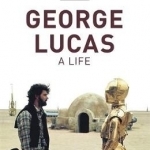
George Lucas
Book
George Lucas by Brian Jay Jones is the first comprehensive telling of the story of the iconic...

The Raven and the Dove
Book
Four fates collide in this avian-inspired, epic fantasy retelling of Tristan and Isolde perfect for...

